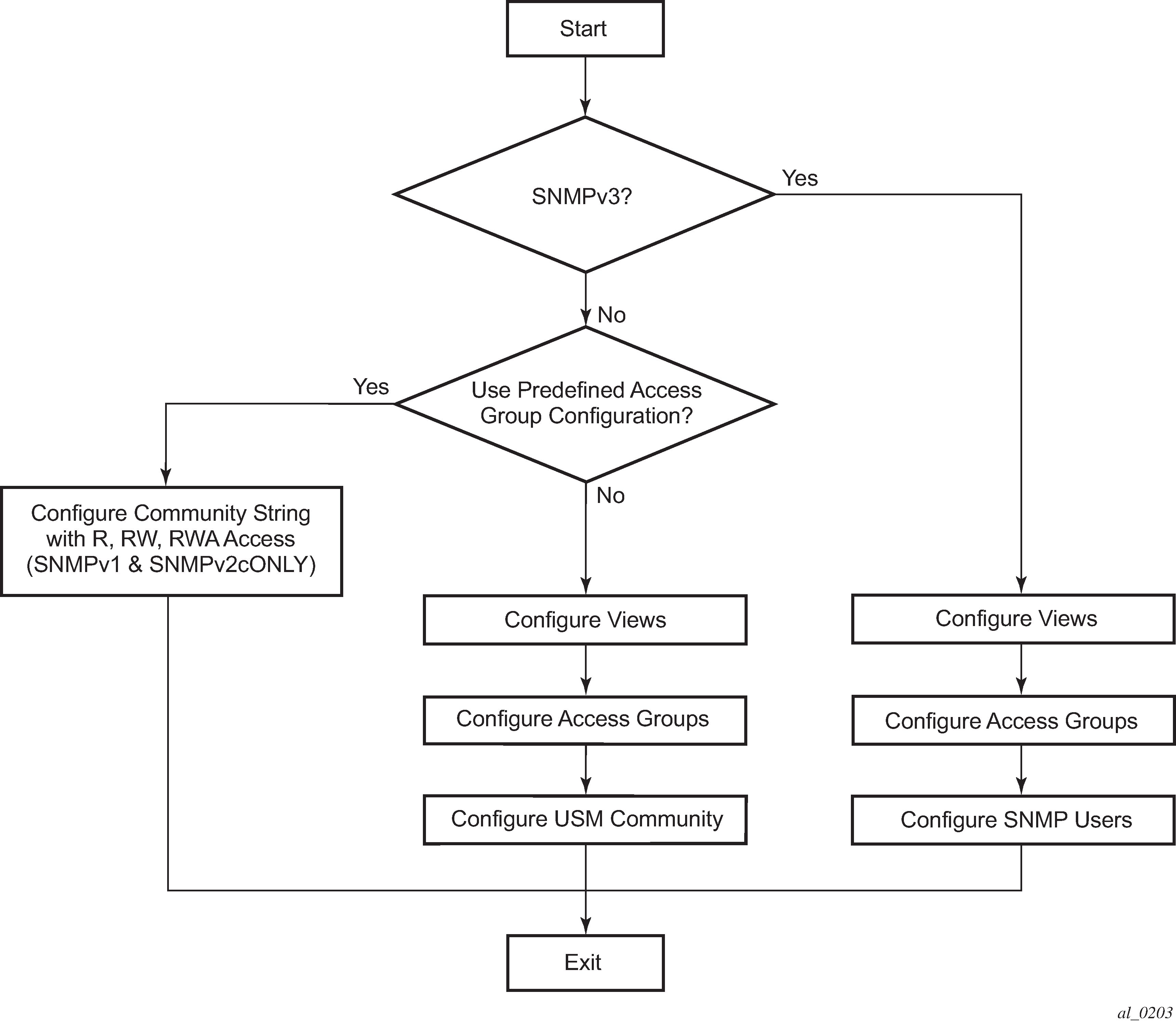SNMPv1 and SNMPv2c do not provide security, authentication, or encryption. Without authentication, a non-authorized user could perform SNMP network management functions and eavesdrop on management information as it passes from system to system. Many SNMPv1 and SNMPv2c implementations are restricted read-only access, which, in turn, reduces the effectiveness of a network monitor in which network control applications cannot be supported.
To implement SNMPv3, an authentication and encryption method must be assigned to a user to be validated by the router. SNMP authentication allows the router to validate the managing node that issued the SNMP message and determine if the message was tampered with.
Figure: SNMPv1 and SNMPv2c configuration and implementation flow depicts the configuration requirements to implement SNMPv1/SNMPv2c and SNMPv3.
